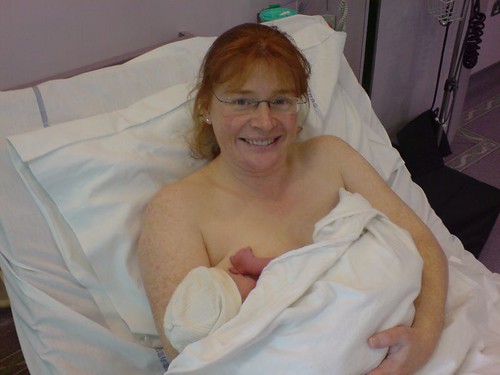Complaints
The following are complaints that may occur during pregnancy:
- Back pain. A particularly common complaint in the third trimester when the patient's center of gravity has shifted.
- Constipation. A complaint that is caused by decreased bowel motility secondary to elevatedprogesterone (normal in pregnancy), which can lead to greater absorption of water.
- Braxton Hicks contractions. Occasional, irregular, and often painless contractions that occur several times per day.
- Edema (swelling). Common complaint in advancing pregnancy. Caused by compression of the inferior vena cava (IVC) and pelvic veins by the uterus leads to increased hydrostatic pressure in lower extremities.
- Regurgitation, heartburn, and nausea. Common complaints that may be caused by Gastroesophageal Reflux Disease (GERD); this is determined by relaxation of the lower esophageal sphincter (LES) and increased transit time in the stomach (normal in pregnancy)
- Haemorrhoids. Complaint that is often noted in advancing pregnancy. Caused by increased venous stasis and IVC compression leading to congestion in venous system, along with increased abdominal pressure secondary to the pregnant space-occupying uterus and constipation.
- Pelvic girdle pain. A common complaint is pain, instability or dysfunction of the symphysis pubis and/or sacroiliac joints resulting from either excess strain or injury (such as Diastasis symphysis pubis) during the course of the pregnancy or birthing process.
- Increased urinary frequency. A common complaint referred by the gravida, caused by increased intravascular volume, elevated GFR (glomerular filtration rate), and compression of the bladderby the expanding uterus.
- Varicose veins. Common complaint caused by relaxation of the venous smooth muscle and increased intravascular pressure.
Childbirth
Childbirth is
the process whereby an infant is born. It is considered by many to be
the beginning of a person's life, and age is defined relative to this
event in most cultures.
A
woman is considered to be in labour when she begins experiencing
regular uterine contractions, accompanied by changes of her cervix —
primarily effacement and dilation. While childbirth is widely
experienced as painful, some women do report painless labours, while
others find that concentrating on the birth helps to quicken labour and
lessen the sensations. Most births are successful vaginal births, but
sometimes complications arise and a woman may undergo a caesarean section.
During the time immediately after birth, both the mother and the baby are hormonally cued to bond, the mother through the release of oxytocin, a hormone also released during breastfeeding.
Postnatal period

There
are fine distinctions between the concepts of fertilization and the
actual state of pregnancy, which starts with implantation. In a normal
pregnancy, the fertilization of the egg usually will have occurred in
the Fallopian tubes or in the uterus. (Often, an egg may become fertilized yet fail to become implanted in the uterus.) If the pregnancy is the result of in-vitro fertilization, the fertilization will have occurred in a Petri dish, after which pregnancy begins when one or more zygotes implant after being transferred by a physician into the woman's uterus.
In the context of political debates regarding a proper definition of life,
the terminology of pregnancy can be confusing. The medically and
politically neutral term which remains is simply "pregnancy," though
this can be problematic as it only refers indirectly to the embryo or
fetus. De Crespigny observes that doctors' language has a powerful
influence over the way patients think, and thus proposes that the best
interests of patients are served by using language that both supports
patient autonomy and is neutral.